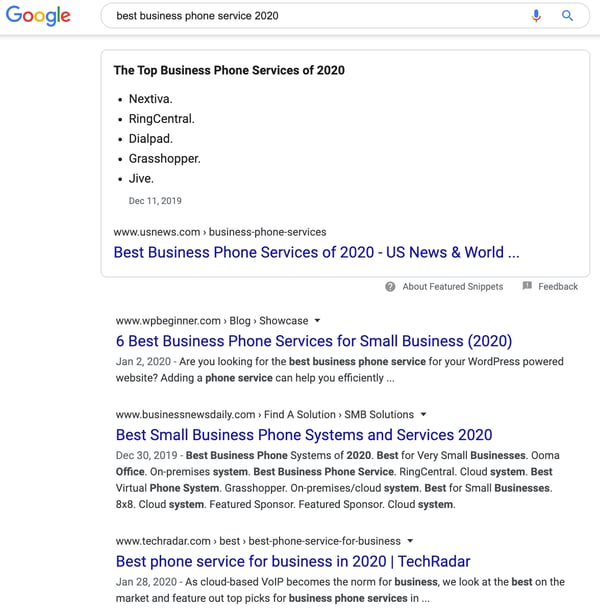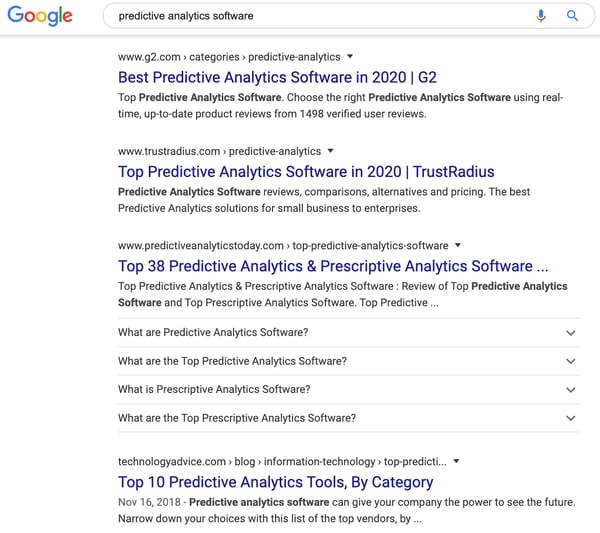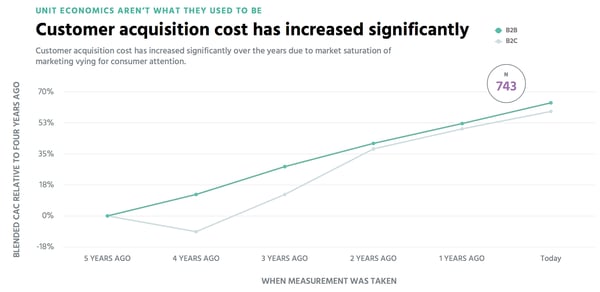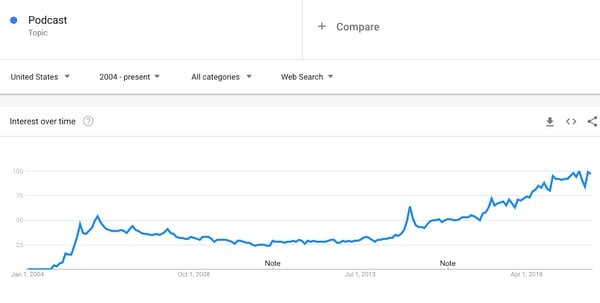February 26, 2020
 by Gaetano DiNardi / February 26, 2020
by Gaetano DiNardi / February 26, 2020

You’re about to learn what the rest of the B2B industry doesn’t want you to know.
So buckle up. Here are the most brutally honest B2B sales and marketing predictions for 2020.
You’ll often come across content surrounding B2B sales and marketing predictions from people who aren’t practitioners in the field. Frequently, companies create blog posts that end up as top-of-funnel content intended to drive traffic to their sites and drive clicks to CTAs rather than use industry experience from a higher-level perspective to craft their predictions.
Because of this, you’ll come across a lot of generic stuff that’s been discussed a million times before: ABM, marketing automation, digital transformation. While they might sound cool, these are just buzz terms that sound good on paper, but don’t actually teach sales and marketing professionals anything new or actionable.
However, this article will be different. It’s written from the lens of a demand generation marketer who has been a practitioner in the field of B2B sales and marketing since 2013.
Demand generation is really a mix of sales and marketing; you have to be able to write cold emails, build sales pitch decks, optimize landing pages, grow website traffic, generate leads across various channels, execute on product marketing initiatives, and more.
Since demand generation is such a broad profession, you’re poised to get a real deal answer. Let’s discuss.
The following trends and predictions will take your B2B brand to new heights.
Affiliates are already a major force, and they are only getting stronger. According to Business Insider, by 2022, affiliate marketing will generate $8.2 billion in revenue in the US alone. You can’t afford to miss out. Google’s algorithm is already favoring affiliate websites over vendor websites in many commercial search results.
For example, let’s examine this Google search for the query “best business phone service 2020,” where the top four organic listings are affiliate websites:

What do you notice? These are not websites that directly sell business phone services. Instead, they send referral traffic to a range of different vendors in exchange for a fee. This puts vendors at a disadvantage because it significantly raises the cost of customer acquisition.
However, this is how buyers want to buy in 2020, and there’s no way to fight it. Shoppers want to see a wide array of choices and comparisons. Google knows this, and thus, they have tweaked the algorithm accordingly. The combination of businesses looking to reach new customers and content creators looking to drive monetization is a perfect match.
As the saying goes: don’t hate the player, hate the game. If you haven’t already, 2020 is the time to start building an affiliate strategy.

Every Thursday, we spill hot takes, insider knowledge, and news recaps straight to your inbox. Subscribe here
Review sites will hold more influence than any marketing strategy you can put together. In fact, consumers trust their peers and other consumers more than you. Like affiliates, Google’s algorithm is also favoring peer review websites over vendor websites in the search results.
For example, check out the query “predictive analytics software,” where the top four organic listings are software review websites, and not websites that directly sell software:

Although you still need a high-converting website with strong value propositions and a beautiful user experience, customer reviews and other user-generated content are even more important. Can you imagine any prospect closing the sale without checking your reviews?
You need two key strategies to influence shoppers: reputation management and customer advocacy. If you can’t get high quality reviews (and aren’t managing the bad ones), then guess what? Your conversion rates are going to suffer. No way around it.
While your competitors can easily scrape lists, copy your content, and match you call-for-call, email-for-email, promo-for-promo, and so on, there’s one thing they can’t do. They can’t infringe on your exclusively built relationships with key partners and resellers.
Channel partners and communities unlock access to prospects that you wouldn’t have been able to access on your own. Plus, both capitalize on social proof, which drives so much customer decision-making. Learn how to build a better channel partner strategy to beat out your competitors.
In 2020, most products have near-identical feature sets. They all do the same thing. So it’s going to come down to customer experience and brand loyalty. If everything else is equal, customers will choose a better experience.
And when most businesses offer seamless transitions from competitors, you need to build brand loyalty in order to retain customers, churn is a major issue. The same service with a brand new phone and comparable price? Customers are saying yes, please.
Provide your customers with a positive experience. Then leverage brand loyalty through marketing and user-generated content and advocacy. Your customers will stick around because you give them what you need and all the cool kids are doing it.
Companies who are using SDRs to send marketing emails will fall flat. If your reps are sending emails to prospects who have never heard of your brand before, and on the first touch they’re asking for a meeting instead of giving value...well, that’s not a sales email. It’s a marketing email – and it’s a really bad one.
A negative first impression for any brand can be extremely damaging in 2020. Prospects tend to remember negative experiences above the positive ones.
Imagine your prospect is a bank account. If you’ve never made a deposit, how do you expect to withdraw anything? This is what sales reps should think about before blindly asking a cold prospect for a meeting. Your SDRs should focus on the development of leads through true conversation and connection.
For more context on this important topic, check out the webinar below from Sales Hacker: Why the SDR is No Longer an Entry Level Role.
Anything you can automate is no longer a differentiator. Automation is magical when executed correctly, but unfortunately too many companies have abused its power.
Here are the stages of the customer lifecycle where marketing automation is most effective:
Nowhere on that list do you see a category called “cold prospect to lead” nurturing. Do yourself a favor and just say no!
So why does this still happen? Because companies are foolishly addicted to scale, and that’s the problem. Modern buyers are too smart. They can smell an automated, generic email a mile away. Show your prospect they are more than just another automated email sequence.
Here’s another problem that no one wants to talk about. The majority of B2B companies are dangerously addicted to acquisition-based growth. Although new customer acquisition is critically important, it’s not the only way to grow a business. CAC is skyrocketing across the board due to oversaturated competition in nearly every possible vertical.

In 2020, onboarding, retention, and advocacy will be the biggest untapped growth levers. Companies must plan to leverage all three.
Both inbound and outbound motions have their limitations. Each has their own set of pros and cons. Let’s go over the benefits of each.
Outbound:
Inbound:
There’s no right or wrong answer on what your acquisition mix should be, but the reality is that no matter what your inbound to outbound ratio looks like, customers are not going to magically appear out of nowhere. Diversity is a hallmark of successful ecosystems, and B2B sales and marketing is no exception.
As the race for personal branding heats up, the LinkedIn algorithm will cool down. There are certainly a few select content types that are more likely to go viral than others, but sustaining an audience takes hard work.
Practitioners in the field who are able to share what they learned in "the trenches" will become favorites and win because their content is backed by value. Naturally, people want to learn from experts.
Don’t try to cheat the system with "engagement pods" or other wacky tactics. These pods don’t last long, and the people in them aren’t really engaged. Everyone’s just going through the motions to be in the pod and selfishly “pump” their own content. The algorithm will change and evolve like everything else. However, the fundamentals remain the same.
The number of websites is approaching 2 billion. Meanwhile, there are around 800k podcasts. In 2019, roughly 192,000 new podcasts were launched. This data certainly aligns with Google Trends.

Ignoring podcasts as an emerging sales and marketing tool is a mistake. Podcasts reach so many different audiences whether you’re a sponsor, guest, or content creator. And they reach people where websites can’t – when they’re on the move. Podcasts will be a game-changer for your business (if you do it right).
One major component of effective omnichannel marketing is content repurposing. Repurposing allows you to reinforce your message in many different places, while conserving effort and maximizing your reach. Each channel brings you closer to the six to eight times a prospect needs to hear your message before they become a viable lead.
Straight up, you’ll reach more potential buyers by using more channels. Some buyers only use a limited number of social media platforms. By having a presence everywhere, you’ll expose your brand to a greater reach of people. Finally, it allows you to get the most mileage out of your content, which is always a good idea.
2020 presents some new challenges for B2B sales and marketing. Existing challenges seem to be magnifying as well. Successful companies will need to combine brand advocacy, strategies, tactics, tools, innovation, and customer experience to drive sustainable growth and customer loyalty into the future.
To achieve the above, you need to learn how to please your customers. Discover more insights in G2's 101 customer service statistics rundown sure to shine light on missed opportunities.
Gaetano DiNardi is the Director of Demand Generation at Nextiva with a proven track record of success working with B2B SaaS brands like Sales Hacker, Outreach.io, and Pipedrive. Gaetano is an inbound marketing expert that leverages both technical & creative marketing strategies to win business results. Outside of marketing, Gaetano is an accomplished music producer and songwriter
Marketers today rely on data-driven approaches to engage prospects. You yourself may have...
 by Bikash Thokchom
by Bikash Thokchom
We’re all familiar with the story of Goldilocks, right?
 by Andy Golden
by Andy Golden
It’s no secret that B2B marketing teams are being held accountable for their influence on the...
 by Ranga Kaliyur
by Ranga Kaliyur
Marketers today rely on data-driven approaches to engage prospects. You yourself may have...
 by Bikash Thokchom
by Bikash Thokchom
We’re all familiar with the story of Goldilocks, right?
 by Andy Golden
by Andy Golden


